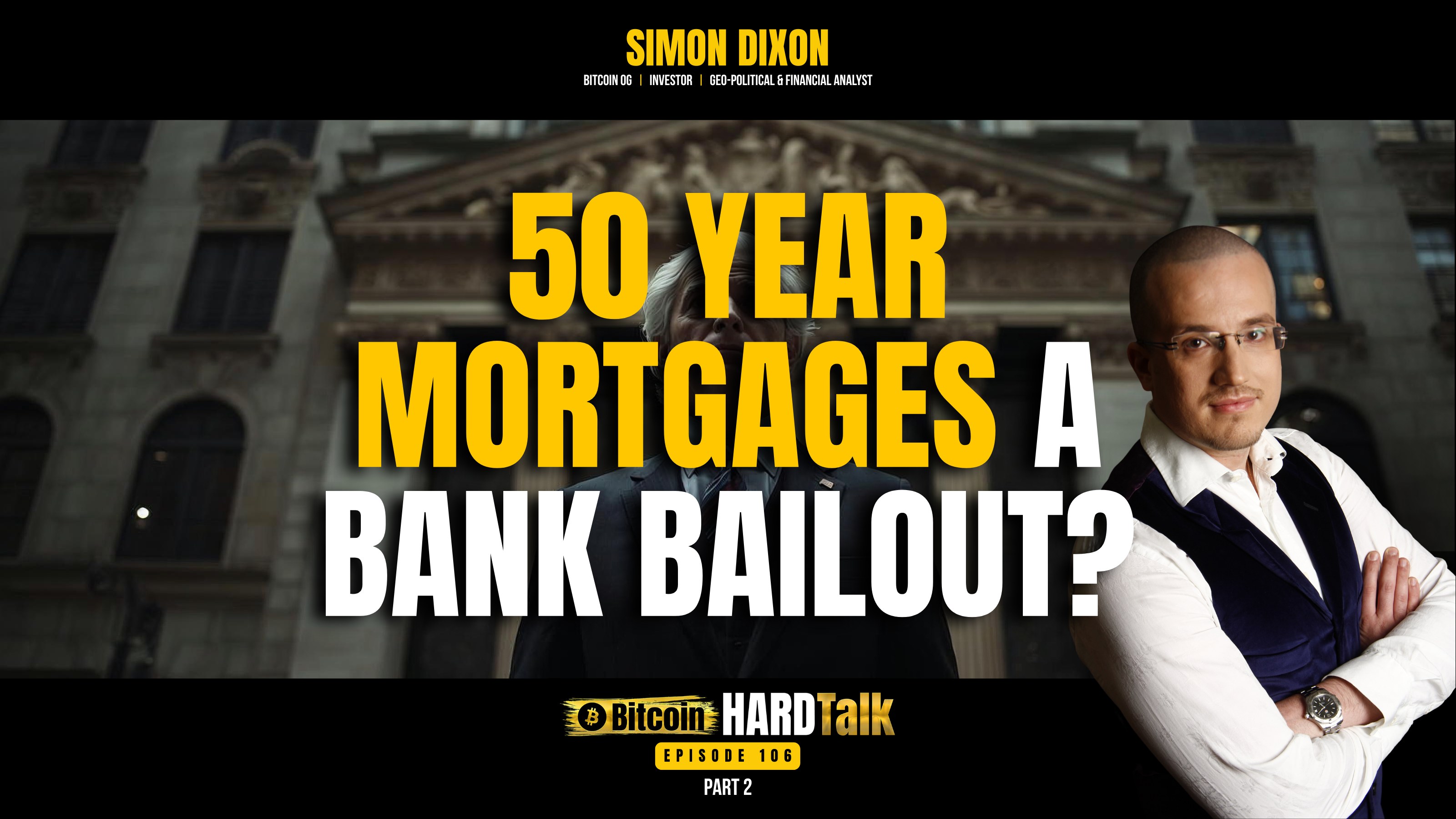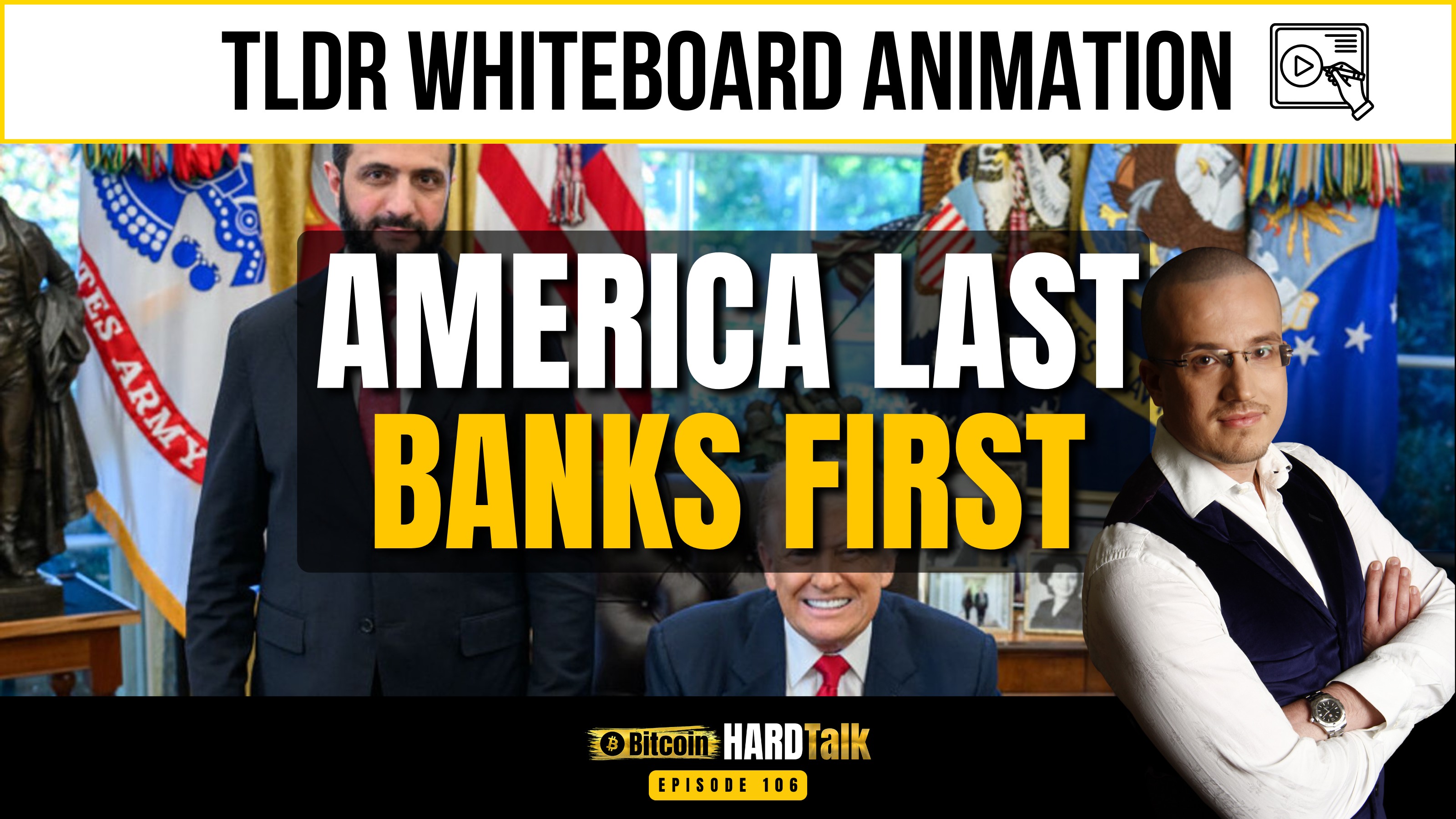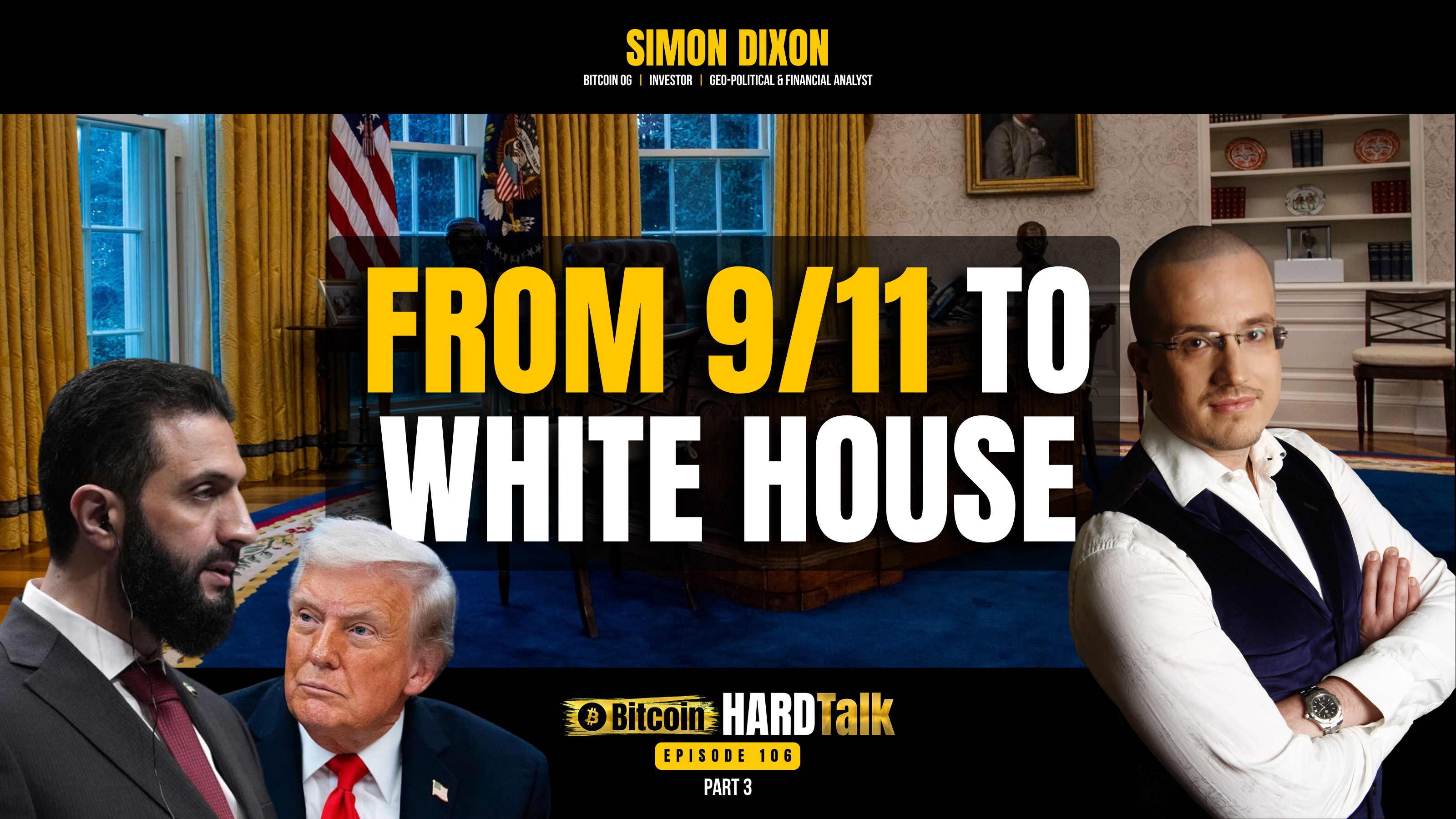Are 50 Year Mortgages a Bank Bailout? Are We in an AI Bubble? | This Week In Macro | #BitcoinHardTalk Ep.106 (Part 2)
Nov 14, 2025Introduction: Connecting the Dots Wall Street Wants You to Ignore
Hey hey Bitcoin Wealth Builders,
On the surface, 50-year mortgages and the AI stock market seem to have nothing in common. One is pitched as a solution for housing affordability, the other as the next technological revolution. But that’s the narrative. The reality is that these are not just connected issues; they are interdependent maneuvers in a war for financial control.
This is the system they don’t want you to see. It’s a strategy to prop up the system’s strategic assets (AI stocks) while simultaneously extracting the capital to do it from Main Street via new financial weapons of mass destruction (50-year mortgages). It’s all designed to bail out the very banks that facilitate the entire scheme.
This article is a summary (TLDR) of Part 2 of "This Week in Macro" from BitcoinHardTalk Episode 106. We’re connecting the dots to show you how the game is really played inside the Proof-of-Weapons Network—a system where value is derived not from market fundamentals, but from privatizing assets that give a select few monopoly control over critical infrastructure, geopolitical rails, and strategic choke points.
Want to go deeper?
This article is a high-level summary of a deep-dive analysis. You can watch the full 1 hour 8 minute episode here, the TLDR video here, and the Whiteboard Explainer here to get the complete picture.
1. The "AI Bubble" That Isn't Allowed to Pop
Takeaway #1: The AI "Bubble" Is a Feature, Not a Bug, of the Proof-of-Weapons Network.
The mainstream narrative, amplified by figures like Michael Burry of "The Big Short" fame, is that AI stocks are in a dangerous bubble. Burry even placed a $1.1 billion bet against the semiconductor sector. But his analysis fails because he’s using an old playbook. He didn't predict the one variable that overrides all others: corruption. As I said in the episode, "what it is that he didn't predict is corruption the fact that the Fed owns everything and we privatize the losses and socialize the gains... he thinks it's still capitalism."
It’s not. The "AI bubble" narrative is a manufactured story, pushed by the network’s hedge funds to trigger corrections, wipe out weaker players, and consolidate their ownership of these critical assets at a lower price.
Companies like Nvidia, Oracle, and Palantir are not just stocks; they are geopolitically strategic weapons. Their value isn’t based on old-world metrics like earnings per share. It’s based on their compliance. Defy the network, and your share price gets tanked. Need proof? Look no further than Elon Musk. Maybe he wasn't meant to talk about the Epstein list. When he did, Tesla's stock took a hit. That's how they engineer compliance, turning even the richest entrepreneurs into blackmail and debt slaves.
"The share price is based upon compliance with the proof of weapons network that was what ESG was it was comply with our requirements and you'll get access to the capital don't comply you won't get access to the capital it will cost you your share price it will cost you your net worth..."
These stocks are essentially immune to poor financial performance because they are protected in three key ways:
- The Money Printer: The Federal Reserve’s shareholders are the big banks. Protecting the banks that own these stocks isn’t a policy choice; it’s self-preservation. They will lower rates and move to quantitative easing (QE) because they have no other choice.
- The Index Funds: Get into the S&P 500, and asset managers like BlackRock use ETFs to force pension funds to buy your stock. This creates a perpetual "passive bid" that is completely divorced from company performance.
- Market Manipulation: The hedge fund network and their media partners can simply ignore bad news, amplify good news, and engineer price movements to serve the network’s goals.
But how does the network ensure the banks—the very shareholders of the Fed's money printer—remain stable enough to fund this system? That brings us to their next maneuver, disguised as a gift to the American homebuyer.
2. The 50-Year Mortgage: A Bailout Disguised as a Gift
Takeaway #2: The 50-Year Mortgage Is a Stealth Trillion-Dollar Bank Bailout.
The official story is that extending mortgage terms to 50 years will help young people with housing affordability. This is a lie.
The 50-year mortgage is a bailout for banks that are drowning in a sea of old 2-3% mortgages. On their balance sheets, those loans are now only worth "50 to 60 cents on the dollar," representing a potential $1 to $2 trillion hole in the banking system. This plan allows them to refinance the American public out of those old loans and into new, higher-rate (6-7%+) loans, saving the banking system at your expense.
The difference in total cost is staggering. Look at the math for a $400,000 house loan:
|
Loan Term |
Lifetime Interest Paid |
Total House Cost |
|
30-Year Mortgage |
~$558,000 |
~$958,000 |
|
50-Year Mortgage |
~$1,160,000 |
~$1,560,000 |
This policy creates "intergenerational mortgages," passing debt from parents to children and grandchildren. It’s a modern form of debt slavery. With massive penalties for paying off the loan early, you are locked into a job and a location. You don't own the house; the bank owns you.
"...it is 100% a bank bailout... it is to refinance those 2 to 3% mortgages and get them at 6 to 7%..."
3. The Hack: How to Beat the System by Playing Their Game
Takeaway #3: The Hack to Escape the Debt Trap Is Hiding in Plain Sight.
While the 50-year mortgage is a trap for the 95% of people who will simply use the lower monthly payment to consume more, it presents a powerful opportunity for the financially savvy.
The hack is simple: take the lower monthly payment and invest the difference.
On a $500,000 home, the difference in monthly payments between a 30-year and a 50-year mortgage is approximately $365. Wall Street hopes you’ll take that $365 and invest it in their S&P 500 ETFs, giving them more control.
The true path to financial sovereignty is to invest that difference in Bitcoin held in self-custody.
This is the trade-off: you pay the bank approximately $500,000 in extra interest over the life of the loan, but you gain the opportunity to build a truly sovereign asset. Based on a conservative estimate of a 20% compounded annual growth rate for Bitcoin (this is not financial advice), investing that monthly difference could make you a millionaire in 18 years. After 30 years, that investment could be worth $8.4 million.
This is the one move the system does not want you to make. It’s how you play their game to escape their network of control.
Conclusion: Your Choice—Debt Slavery or Financial Sovereignty
Don't be fooled. The system isn't broken; it's a finely tuned wealth extraction machine. The narratives about "AI bubbles" and "affordable housing" are the anesthetic they use while they pick your pocket. The system has to leave a small crack for the savvy to escape—a back door. Your job is to find it and run through it.
In a world where debt is the weapon and compliance is the currency, is self-custodied Bitcoin the only true declaration of financial independence?
🇨🇳 🇺🇸 China vs U.S.: Who Owns the 127,000 Bitcoin? | This Week In Bitcoin | #BitcoinHardTalk Ep.106 (Part 1) (Duration: 52 minutes)
From 9/11 To The White House | This Week In GeoPolitics | #BitcoinHardTalk Ep.106 (Part 3) (Duration: 1 hour 42 minutes)
Watch, Follow, and Learn More
- Watch the Full Episode: This was just Part 2. Watch the full Bitcoin Hard Talk Episode 106 on YouTube to see how the macro picture connects with Bitcoin and geopolitics.
- Follow on X: For real-time updates and analysis, follow Simon Dixon on X.
- Subscribe & Download: Follow on Rumble and download audio episodes on Spotify or Apple iTunes to listen on the go.
- Join the Free Community: Get a free membership on simondixon.com to receive a free digital copy of my book, access to content backups, and a free course on Bitcoin self-custody.
Part 5 - Protect Your Bitcoin Before It’s Too Late — Self-Custody Guide with Simon Dixon & Andreas Antonopoulos | Protecting yourself in a world of crypto, AI & CBDC’s 
Peace!

Simon Dixon🚀
Bitcoin OG | Investor | Geo-Political & Financial Analyst
Disclaimer
This content is for informational purposes only and should not be considered financial advice. The views and opinions expressed are the personal opinions of Simon Dixon. All investments, including Bitcoin, carry a significant risk of loss. You should always conduct your own research and consult with a qualified professional financial advisor before making any investment decisions.
Related Blog Posts
🇨🇳 🇺🇸 China vs U.S.: Who Owns the 127,000 Bitcoin? | This Week In Bitcoin | #BitcoinHardTalk Ep.106 (Part 1)
From 9/11 To The White House | This Week In GeoPolitics | #BitcoinHardTalk Ep.106 (Part 3)









